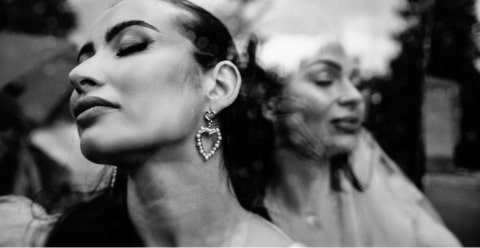Cover image by rawpixel.com on Freepik
Photography relies heavily on capturing moments with precision and finesse, but it’s not without its challenges. One of those challenges is noise.
Noise in photography refers to the random variations in brightness and color that can appear in a picture — similar to the grain you might see in film photography. Thankfully, AI noise reduction technology is here to help.
Understanding AI Noise Reduction
So, what is noise reduction in photography and AI photo editing?
It’s a technology that identifies and eliminates noise while protecting your picture’s details. It uses a dynamic technique that analyzes each image individually, adjusting itself to specific noise patterns in your photo. This adaptability significantly improves manual editing because fixed filters don’t limit AI.
With AI noise reduction, You can adjust various parameters to customize the AI editing process and realize your creative vision in the final picture. This freedom means you can prioritize the most critical aspects of your photo.
How Does AI Noise Reduction Work
- The AI tool starts by analyzing your image, understanding the noise patterns, and separating them from genuine image elements.
- Then, it targets the noisy areas while keeping the well-exposed and high-contrast regions unharmed.
- To preserve fine details, the AI noise reduction tool uses wavelet transforms that break the image into multiple components with varying frequencies.
- After saving the fine details, the tool uses edge-preserving filters to keep the edges and fine details sharp.
- The AI tool adapts its approach based on the photo’s characteristics, balancing the reduced noise and preserved details.
Advantages of AI Noise Reduction
Why should you care about AI noise reduction? And what does noise reduction do in photos? Well, it offers many advantages, making it a must-have tool in your photography arsenal.
- Consistency: AI noise reduction processes each photo consistently by applying the same techniques, which gives you a cohesive look across the entire collection.
- Preservation of Image Clarity: It selectively reduces noise while preserving fine details, ensuring the image remains clear and sharp.
- Clean Appearance: AI noise reduction keeps your images looking natural and unprocessed.
- Efficiency: AI noise reduction tools save you a lot of time, freeing you from manual retouching.
Is There Such a Thing as Too Sharp?
Now you might wonder, can AI make your pictures too sharp, almost to the point of looking unrealistic? Well, the short answer is yes, it can.
AI noise reduction can overly sharpen your photos and make them unrealistically clear, but that doesn’t mean you should avoid it. You should find the right amount of noise reduction so your images follow your artistic style and don’t look artificial.
When AI Noise Reduction Isn’t Necessary
While it can significantly improve picture quality, AI noise reduction may not be the best fit in some scenarios.
If you want to ensure your creative vision is unbothered—or are just looking for a natural look and feel — edit your photos manually. For example, portrait photography needs a more hands-on approach to preserve the client’s natural appearance.
AI Noise Reduction in Video Editing
AI can improve video quality by reducing noise and adjusting lighting, which makes it a valuable tool if you’re a videographer who wants to get high-quality results.
Maximizing AI Noise Reduction Benefits for Photography Editing
If you’re eager to incorporate AI noise reduction into your photography workflow, here are some best practices to keep in mind.
- Customization: Adjust settings to prioritize specific aspects of your image.
- Garbage in, Garbage out: Start with a well-exposed image for the best results.
- Continuous Learning: Stay informed about AI advancements and updates.
- Balancing Creativity: AI noise reduction is there to help you with your creative vision, so find the right balance between its improvements and your artistic touch.
As AI evolves, it will become more human-centric, learning from past creative works. The continuous improvement will lead to even more effective noise-reduction software for photographers and editors.
Imagen can elevate your photography and make the editing process more accessible. It’s a dynamic tool that adapts to your needs, offering consistency and clarity. So, dive in, experiment, and create picture-perfect moments with Imagen.
____
 Michaela Luyt is a digital marketing specialist and an experienced photographer with over 5 years of expertise, capturing moments from commercial to lifestyle settings. She has a creative eye, a passion for storytelling, and an ability to evoke emotions through the lens. Her freelance photography and marketing businesses focus on providing tailored solutions for small companies and agencies.
Michaela Luyt is a digital marketing specialist and an experienced photographer with over 5 years of expertise, capturing moments from commercial to lifestyle settings. She has a creative eye, a passion for storytelling, and an ability to evoke emotions through the lens. Her freelance photography and marketing businesses focus on providing tailored solutions for small companies and agencies.
